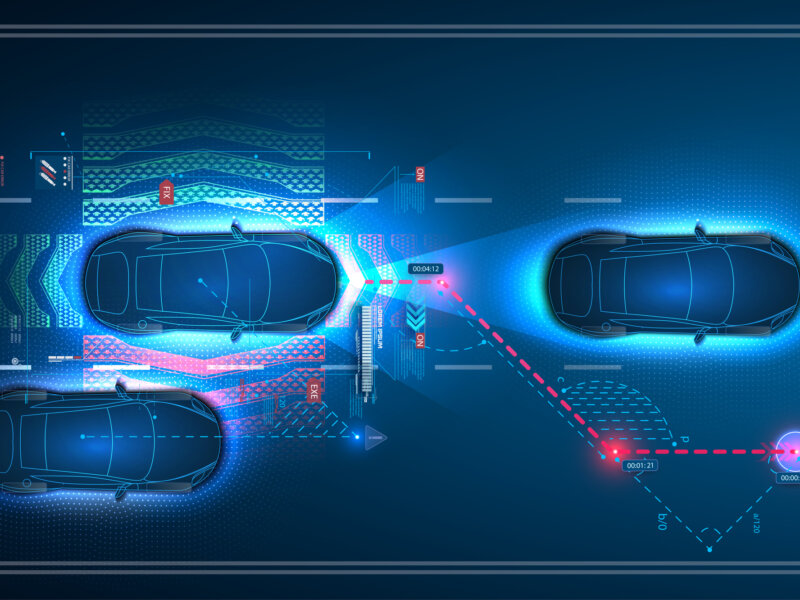
After years of research and billions of dollars it’s abundantly clear: autonomous vehicles are hard to do. But, given Gartner puts them in the “Trough of Disillusionment,” it seems it’s only a matter of time before self-driving cars finally make it out onto our highways.
In fairness, robo-taxis and cars without steering wheels are just one use case for autonomy. Other forms of autonomous vehicle are already in service, and more are on the way. They’re just not out on the highways.
One thing all these autonomous vehicles have in common is a voracious appetite for sensors. Not just cameras, radar, and LIDAR but a host of less visible but equally important devices. This is an area where Wells is ready to contribute. Here’s more on the Wells portfolio of sensor products for autonomous vehicles.
Understanding Autonomy
In the popular imagination an autonomous vehicle is a car that drives itself from A to B with no human intervention. While that’s clearly an end goal it’s also proving to be extremely difficult. There are, however, other implementations and levels of autonomy.
Staying with cars, the SAE defines six levels of autonomy, from zero capabilities up to level 5 full autonomy. The intermediate levels incorporate many of the advanced driver assistance systems (ADAS) already available. Adaptive cruise control and lane keeping assistance are technologies readers may be familiar with, and there are many others.
Moving away from cars, one of the fastest growing applications for autonomy is in logistics. Autonomous mobile robots (AMRs) are being deployed to move packages and materials around warehouses and distribution centers with no human input.
Somewhat related, driverless shuttles are being evaluated in many areas where people need moving over short distances, at low speed and in somewhat controllable environments. Elsewhere, agriculture and mining are both adopting autonomous technology as part of a drive to raise productivity and lower costs.
Sensors for Autonomous Vehicles
The headlines about autonomous vehicles all focus on cameras, radar, and LIDAR. These build images of the surroundings that artificial intelligence uses for navigation. Unarguably, these are essential in crowded, unpredictable environments, but they are far from being the only sensors needed.
Just as important, the vehicle needs to know where it is, how it’s oriented in its environment, and whether anything is outside of the normal operating parameters. (Remember that autonomy means there may not be a human monitoring what the vehicle is doing.)
Inputs for achieving these goals include:
- The throttle position – what speed is being requested
- Temperaturesensors – external, internal and throughout the electric or internal combustion powertrain
- Where the steering wheels are pointing
- How fasteach wheel is turning
- Inclination – how far is the vehicle tilting, in what direction, and is it near tipping?
Wells Engineered Products has an extensive portfolio of sensors addressing these and many other functions.
Throttle Position Sensors
While future autonomous vehicles will almost certainly be powered electrically rather than by internal combustion, they will still need to know the difference between target and actual speed. What’s more, ICE-powered vehicles still need accurate throttle position measurement, regardless of the level of autonomy implemented.
In an ICE vehicle, the Throttle Position Sensor (TPS) monitors throttle blade position within the throttle body. This information is used by the engine control unit (ECU) to manage fuel delivery, ignition timing, transmission shifting and more.
Temperature Sensors
Whatever their autonomous capabilities, vehicles using internal combustion need a host of temperature sensors to manage emissions and maintain efficiency. These measure intake and exhaust conditions and engine temperatures so the ECU can optimize mixture strength and ignition timing. Arguably, when such sensors are used in an autonomous vehicle, they will need even higher levels of accuracy and reliability as it’s likely no human occupant will be alert to abnormal operation.
In vehicles powered electrically, (battery or fuel cell,) thermal management is just as important. Batteries perform best over a narrow temperature range, which demands high precision from the sensors used. Likewise, fuel cells need sensors to provide the data for maintaining optimal conditions. Last, the temperature of hydrogen fuel, gaseous or liquid, must be managed carefully.
Steering Position Sensors
Steering angle and rate of turn are essential inputs to the power steering and Electronic Stability Control (ESC) systems. This ensures smooth turns, and when matched with wheel speed information, detection of potential instability before a serious problem arises.
Steering position sensors take various forms and can provide analog or digital outputs. In an autonomous vehicle with a steering wheel one or more sensors are fitted to the steering column. In a driverless vehicle without a steering wheel and column they go down nearer to the wheels.
Wheel Speed Sensors
By monitoring the rate at which each wheel is turning, the electronic brake control module (ECBM) detects wheel spin that signifies slip or unstable operating conditions. Having done this, the controller can adjust motor speed and torque to bring the vehicle back under safe control.
Wells wheel speed sensors are engineered for the demanding conditions experienced at vehicle corners. Heat- and chemical-resistant thermoplastic housings and weather-proof seals ensure durability and longevity.
Tilt / Tip Sensors
Used extensively in construction, warehouse/logistics and utility vehicles, tilt/tip sensors help protect equipment, (and operators/riders if present,) from rollovers caused by heavy loads carried too high and rapid turns.
Several technologies are used for tilt sensors; they offer varying degrees of accuracy and durability and come in different size packages. Ask Wells for more information.
Specialists in Sensors for Automotive Applications
Achieving accuracy and ensuring durability in the challenging conditions in which autonomous vehicle operate now and, in the future, requires deep expertise in sensor engineering and manufacture. Wells Engineered Products follows a structured development process for every sensor, which includes extensive testing in the most extreme conditions. Contact us to learn more about our resources, expertise and capabilities.
